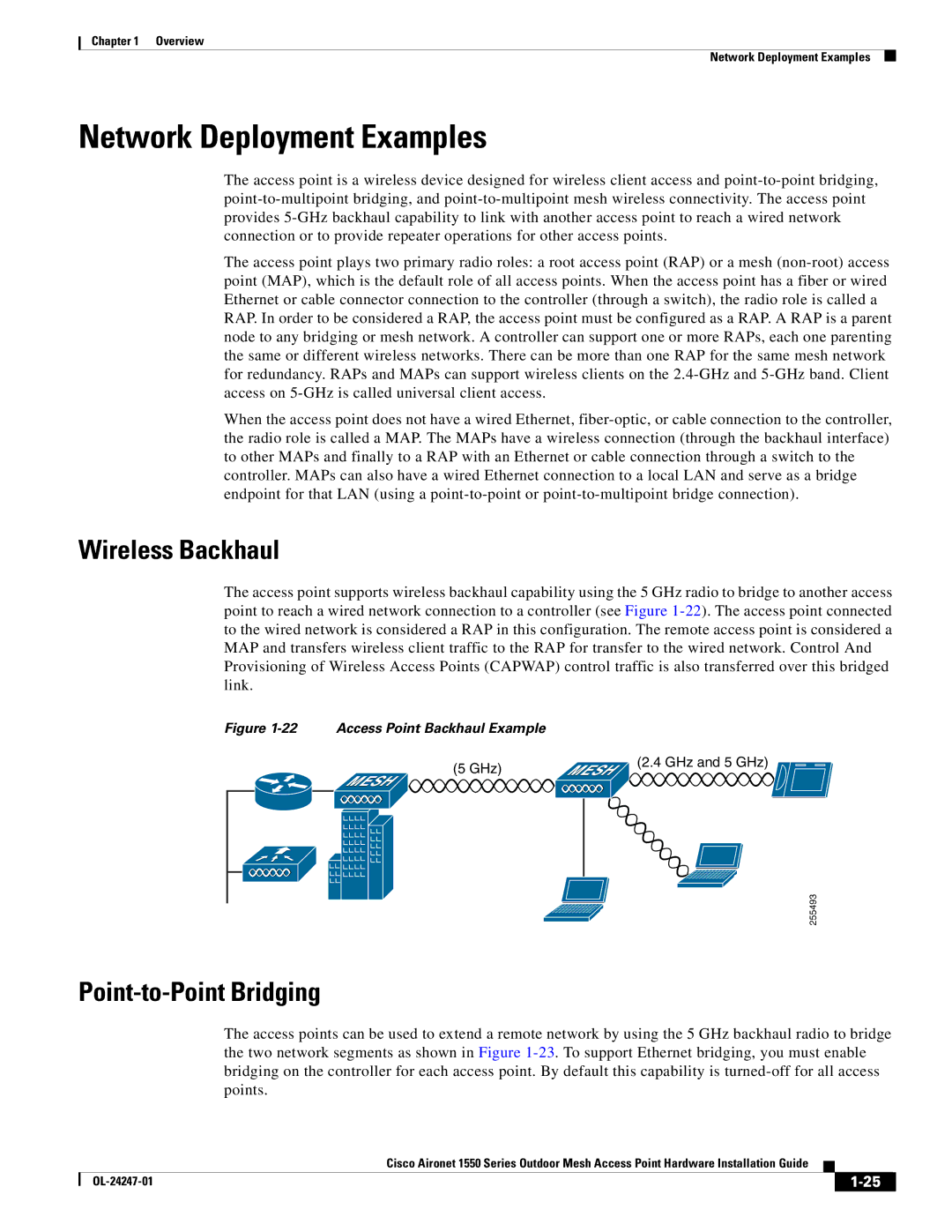Chapter 1 Overview
Network Deployment Examples
Network Deployment Examples
The access point is a wireless device designed for wireless client access and point-to-point bridging, point-to-multipoint bridging, and point-to-multipoint mesh wireless connectivity. The access point provides 5-GHz backhaul capability to link with another access point to reach a wired network connection or to provide repeater operations for other access points.
The access point plays two primary radio roles: a root access point (RAP) or a mesh (non-root) access point (MAP), which is the default role of all access points. When the access point has a fiber or wired Ethernet or cable connector connection to the controller (through a switch), the radio role is called a RAP. In order to be considered a RAP, the access point must be configured as a RAP. A RAP is a parent node to any bridging or mesh network. A controller can support one or more RAPs, each one parenting the same or different wireless networks. There can be more than one RAP for the same mesh network for redundancy. RAPs and MAPs can support wireless clients on the 2.4-GHz and 5-GHz band. Client access on 5-GHz is called universal client access.
When the access point does not have a wired Ethernet, fiber-optic, or cable connection to the controller, the radio role is called a MAP. The MAPs have a wireless connection (through the backhaul interface) to other MAPs and finally to a RAP with an Ethernet or cable connection through a switch to the controller. MAPs can also have a wired Ethernet connection to a local LAN and serve as a bridge endpoint for that LAN (using a point-to-point or point-to-multipoint bridge connection).
Wireless Backhaul
The access point supports wireless backhaul capability using the 5 GHz radio to bridge to another access point to reach a wired network connection to a controller (see Figure 1-22). The access point connected to the wired network is considered a RAP in this configuration. The remote access point is considered a MAP and transfers wireless client traffic to the RAP for transfer to the wired network. Control And Provisioning of Wireless Access Points (CAPWAP) control traffic is also transferred over this bridged link.
Figure 1-22 Access Point Backhaul Example
(5 GHz) | (2.4 GHz and 5 GHz) |
|
255493
Point-to-Point Bridging
The access points can be used to extend a remote network by using the 5 GHz backhaul radio to bridge the two network segments as shown in Figure 1-23. To support Ethernet bridging, you must enable bridging on the controller for each access point. By default this capability is turned-off for all access points.
| | Cisco Aironet 1550 Series Outdoor Mesh Access Point Hardware Installation Guide | | |
| | |
| OL-24247-01 | | | 1-25 | |
| | | |

